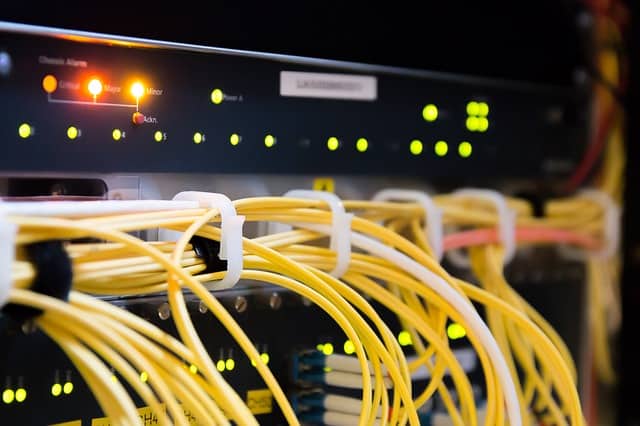There is a lot to think about when it comes to choosing an internet provider for your business needs. Beyond just the cost and speed, you also need to think about the type of internet technology available in your area. That is the infrastructure upon which the service is built.

In recent years, a lot of attention has been placed on fiber optic internet. Several significant providers have started offering fiber optic access in addition to the standard cable and DSL options. Additionally, companies like Google are starting to build their fiber optic networks. But what is fiber optic, and what makes it different from, or better than, cable or DSL?
What is fiber optic?
As the name suggests, fiber optics send an optical, or light, signal down super-thin filaments or fibers. These fibers can be as thin as a human hair and are usually made of special plastic-coated glass.
Although internet providers have started advertising fiber optic networks fairly recently, fiber optic cables have actually been around, and in use, for several decades. The United States Government has been using fiber optics for the NORAD internal network since the 1970s. Fiber optic cables were also introduced as part of the public telephone system in Chicago around the same time.
What makes it different from, or better than, cable and DSL?
Fiber optic, cable, and DSL infrastructures all rely upon a wired system to carry signals over a long distance. However, the types of signals they carry and the type of wires are very different.
Cable and DSL both rely on copper wiring to carry electrical signals. Although copper wire is highly conductive, it has its limitations – namely, a phenomenon called impedance.
Impedance is resistance along the wire that can slow down or disrupt the electrical signal. The best way to describe impedance is to have you imagine that the electrical signal is a train running along a copper track. As the train travels along the track, the wheels produce friction which can prevent the train from traveling too quickly along the track. This friction also produces heat, which can warp the track. You can do things to reduce the amount of friction, but you can’t completely eliminate it. Because of this, there will always be some degree of friction slowing, or impeding, the speed of the signal. In terms of internet access, this means that cable and DSL both have limitations on how fast they can carry an internet signal.
DSL tends to have the slowest internet speeds, and cable can be much faster; however, fiber optic has the potential to have the fastest speeds of all.
Unlike cable and DSL, fiber optic sends a light signal through a reflective filament. Because it’s sending light, there is virtually no impedance to slow down the signal, which means the sky is the limit on potential speed.
Speed isn’t the only issue, however. The impedance on a copper wire also limits the number of signals that wire can transmit and the distance that signal can travel without degrading. Copper wire usually needs some kind of booster somewhere down the line to help the signal travel farther. On the other hand, light can travel to infinity as long as there is a clear line of sight.
This means that even in areas where fiber optic speeds aren’t much faster than cable, the signal will be much more precise with fewer errors.
For example, if you are trying to decide between AT&T’s fiber-optic internet and Comcast’s cable internet, and both offer the same speed, the fiber-optic service will have a more precise and more consistent signal.
Fiber optic is also considered more secure because it is much more difficult to physically tap into a fiber optic line and intercept the signal than it is to tap into an electrical copper line. This is one of the many reasons the United States Government uses fiber optics for secure communications.
The only major downside to fiber optic is that it is currently unavailable in as many areas as cable or DSL. Even in areas that have fiber optic phone lines, fiber optic internet might not yet be available. This is due in large part to the fact that the phone companies that initially installed the fiber optics still need to upgrade their systems to support the higher speed and data demands.
However, if fiber optic is available in your area, it’s a good idea to look into it for your internet needs, because it will provide superior speeds and superior signal quality.

